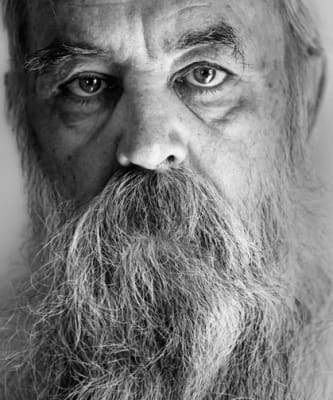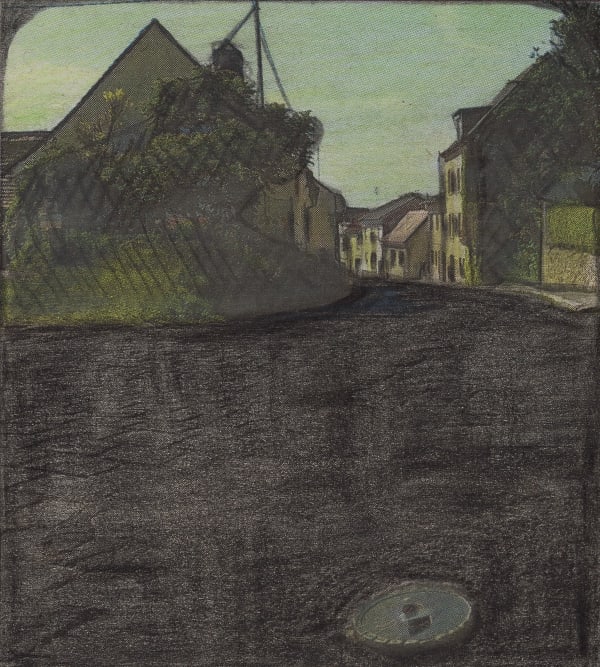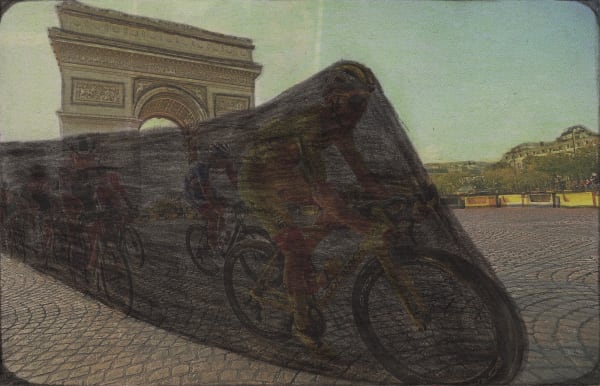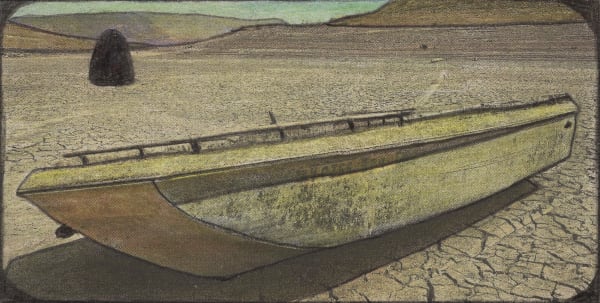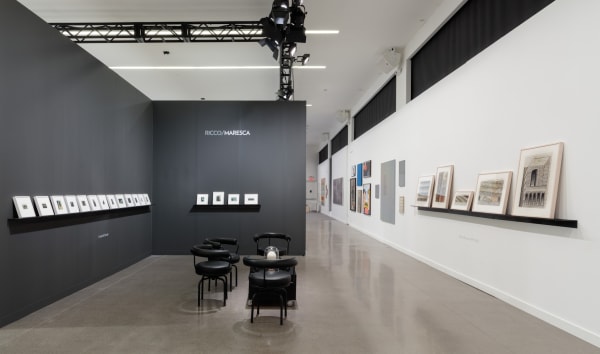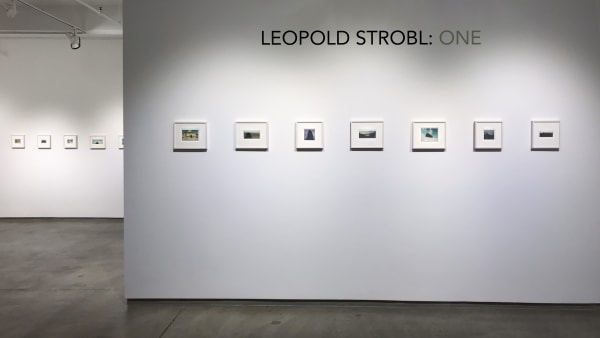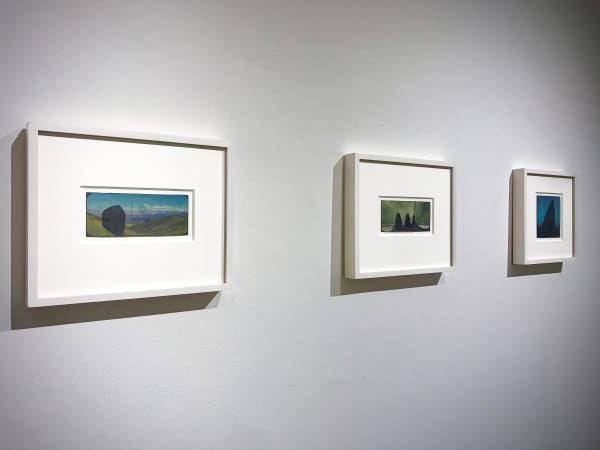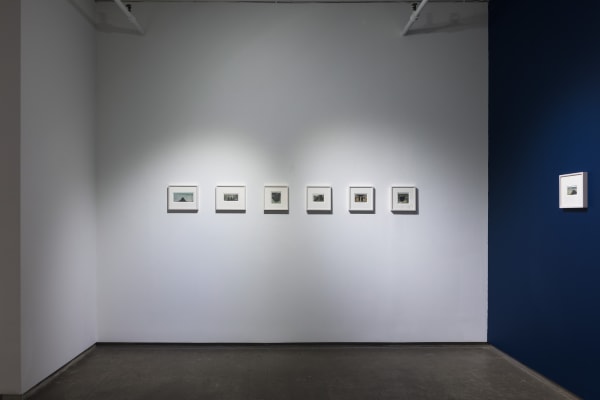We are thrilled with the news of Leopold Strobl’s inclusion in the upcoming Venice Biennale (April 20 - November 24, 2024) as part of the exhibition “Foreigners Everywhere,” curated by Adriano Pedrosa at the 60th International Art Exhibition.
***
Venice Biennale website
-
All works:
Untitled. Graphite and colored pencils on newsprint clip mounted on paper
-
Imagine a world where woods, mountains, houses, buildings, cities and villages, roads, meadows, beaches, lakes and oceans exist in complete stillness; a silence so profound that it makes shapes and colors glow with almost spiritual intensity. This world is both familiar and eerie; constantly intercepted (and strangely enhanced) with the startling presence of densely rendered graphite formations—resembling boulders, mountain peaks, waves, pods, and prehistoric eggs. Each work by Leopold Strobl is a new window to this mysterious place, an invitation into the mind of its creator and a journey of individual discovery.
Strobl was born in Mistelbach, Lower Austria in 1960. He has been devoted to art since his early twenties, but the visual language for which he is known for is a relatively recent development. He works almost every day, starting in the early hours of the morning, and completes one drawing daily. This impetus is significant both in terms of form and content: the artist’s works are generally no bigger than 8 ½ inches on the longest side and can be almost as small as a postage stamp; they come to the artist as little visual epiphanies and strike the viewer with this poetic immediacy.
-
Strobl’s process is a seamless, multilayered appropriation and alteration of a photographic base. It starts with combing through the local newspapers for evocative images that will lend themselves to the transformation that is to come. Strobl then scissors these images out of their original context and backs them with clean drawing paper. We know the steps that follow, and the simple materials utilized (graphite and colored pencils), but not in what order, or if there is one—as the artist doesn't speak of it or allow onlookers when he is working. Strobl’s compositions are generally encased in a drawn internal frame that is either very subtle (delicately enclosing each scene with rounded corners) or partially amorphous, covering large areas like a spill or a flood. Depending on the disposition of the underlying clip, he traces over certain outlines (topographic features, horizon lines, architectural details, winding perspectival lines) and if there are figurative elements that don’t fit into the artist’s vision, he encloses them in graphite, like an insect spinning a cocoon, or a minimalist reducing a representational image into a basic shape.
What might have been a person sitting on a bench, a hiker climbing a mountain, a group portrait, a canoer paddling in a river, or cyclists zooming past the Arc de Triomphe all become petrified, ghostly presences in Strobl’s realm. This is, however, more a process of incorporation than it is one of elimination: the shapes remain heavy with the figures they have covered, with the motion they have frozen, and the “noise” they have silenced; they become a conduit that merges any trace of human narrative into the landscape that originally sustained it. A “classic” Strobl work, elegant in both execution and subject matter, will often feature shrouded human figures literally transformed into a graphite topography; lone peaks or sinuous curves against luminous green-blue skies. The artist is a perceptive colorist who saturates his world with shades green, grey, yellow, blue, and ivory white—blending and layering pigment onto large areas with an eye toward the existing texture and light in the underlying photograph—so that ultimately, we don’t know where the artist’s touch ends and the found image begins.
-
Strobl is a tall stout man with a wizard's beard and big eyes that look mint-green or turquoise depending on the light. For more than 15 years, he has been attending the open studio program at the Gugging Art Brut center, which presently encompasses a residence for artists, a gallery, an atelier, and a museum. Guggings’s origins date back to the Maria Gugging Psychiatric Clinic, founded in the late nineteenth century. In 1954, Dr. Leo Navratil, then head psychiatrist, conducted diagnostic drawing tests with his patients and discovered that some of them had innate artistic talent. Only a few years prior, the French artist Jean Dubuffet had coined the term art brut, inspired by experiments similar to Navratil’s.
Art brut, as Dubuffet defined it, was produced in unexpected places, by people who didn’t call themselves artists—particularly mental patients--and whose freedom from convention yielded art’s most powerful raw forms. Dubuffet believed that art brut was the antidote to the corruptive influence of mainstream culture in art. Ultimately, what it accomplished was to allow for a more inclusive understanding of what art can be and where it can occur. This acknowledgement gave Navratil’s patients, and their contemporary counterparts (now simply referred to as artists) a place in the spectrum of visual art. Strobl navigates a fine line somewhere in between this spectrum. He speaks little about his personal history, he is personable but hermetic; his mental and physical health seem to entail a delicate balance—one that is surely indebted to the ritualistic aspects of his art making but owes very little to its commercial success.
We continue to marvel at Strobl’s ability to reconcile opposite visual logics in his work: to smoothly blend his lyrical interventions with the world that he exalts and obscures, to uphold his yearning for equilibrium and transcendence against the sad and dangerous contingencies of the present world, and to give the viewer a sense of totality in the fragment, a reliable theme in the variations; the feeling that there’s a unifying essence in everything we look at.
-
PAST EXHIBITIONS
SMALLSCAPES (2016) -
INDEPENDENT ART FAIR (2018)
-
ONE (2020)
-
Views (2023)
-
SELECTED PRESS
•Louis Block: Leopold Strobl: "Views." The Brooklyn Rail (2023)
•Jennifer Krasinski: Leopold Strobl "One." Artforum (2021)
•Roberta Smith: Photography in the Raw, The New York Times (2021)
•Edward M. Gómez:
Monumental Art No Bigger than a Postcard. Hyperallergic (2020)
Odd Atmospheres. Raw Vision (2019)
•Francis Brent: The Projective Drawing at the Austrian Cultural Forum. Modern Magazine (2018)
•Will Heinrich: The Don’t-Misses at Independent and NADA. The New York Times (2018)
-
